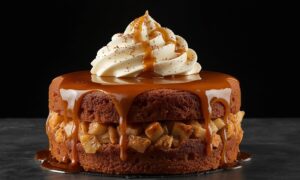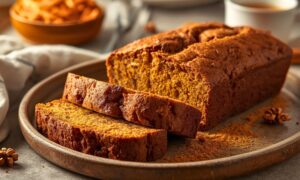Northern France Beef Carbonnade isn’t just a traditional French beef stew, it’s the kind of recipe that slows life down, even when your schedule doesn’t. Picture this: a long day of meetings, deadlines chasing you, and your brain already halfway to tomorrow. By the time I closed my laptop, the city lights were glowing, and all I wanted was something that felt like comfort on a plate.
That’s when I reached for the ingredients that define this Flemish beer stew: beef, onions, and a bottle of dark ale. Nothing complicated, just honest flavors that come alive when given time. The onions caramelized slowly, filling the kitchen with sweetness, while the beef seared golden and bold. Then came the beer, fizzing into the pan, creating that unmistakable aroma of beef braised in beer, rich, earthy, and deeply inviting.
As the stew simmered, transforming into something velvety and warming, I leaned back, finally off the clock. This wasn’t just cooking; it was therapy in a pot. That’s why this French comfort food recipe has stayed in my kitchen, it feeds more than hunger, it resets the soul.
What Makes Northern France Beef Carbonnade So Special
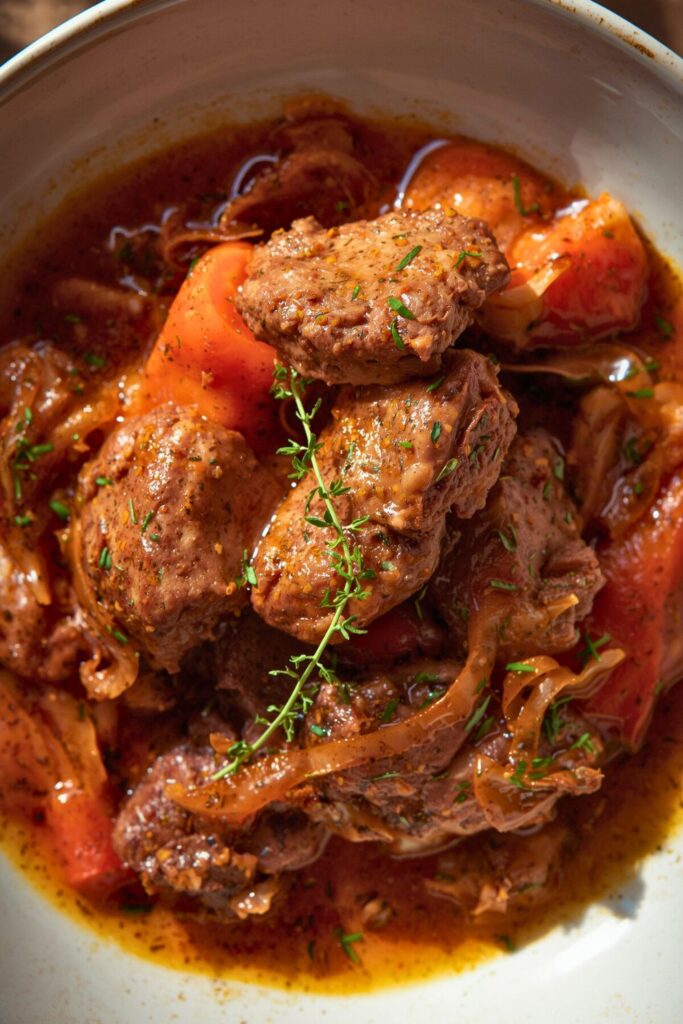
This isn’t your average beef stew. Carbonnade à la flamande (its fancy French name) comes from the borderlands between France and Belgium, where coal miners needed hearty, stick to your ribs meals that could simmer all day while they worked underground.
The genius lies in its simplicity. While other braises rely on wine’s acidity to break down tough fibers, carbonnade uses beer, specifically Belgian style ales that bring maltiness, subtle sweetness, and just enough bitterness to balance everything perfectly. The result? Beef so tender you can cut it with a fork, swimming in a sauce that’s simultaneously rich and refreshing.
What really sets this apart is the caramelization game. Those onions get cooked down until they’re practically jammy, creating natural sweetness that plays beautifully against the beer’s hoppy notes. It’s comfort food that actually makes sense, no pretentious ingredients, just pure flavor logic.
Why Your Kitchen Needs This Recipe
Think about your go to comfort meals. Bet they’re either too complicated for a Tuesday night or so simple they’re boring by the third bite. Carbonnade bridges that gap perfectly. It’s sophisticated enough for company but foolproof enough for when you’re barely functioning after a long day.
Plus, it’s practically magic for meal prep. This dish actually improves overnight, making it perfect for those “cook once, eat three times” weeks we all have. And here’s the kicker, it freezes beautifully, so you can have restaurant quality comfort food ready whenever life gets overwhelming.
Ingredients & Smart Swaps
What You’ll Actually Need
- 3 pounds chuck roast or beef short ribs, cut into 2-inch chunks
- 4 large yellow onions, sliced thick (don’t get fancy with thin slices here)
- 3 tablespoons all purpose flour
- 2 bottles Belgian style ale (about 24 ounces total)
- 2 tablespoons brown sugar
- 2 bay leaves
- Fresh thyme sprigs (about 6-8)
- 3 tablespoons butter
- 2 tablespoons vegetable oil
- Salt and freshly ground black pepper
- 1 tablespoon Dijon mustard (trust me on this one)
Smart Substitutions That Actually Work
Can’t find Belgian ale? Here’s the thing, you want something malty and not too hoppy. A good brown ale or even a darker lager will work beautifully. Stay away from IPAs unless you want your stew tasting like a hop farm.
No chuck roast? Short ribs are actually even better if your budget allows. Bottom round works too, but you’ll need to extend the cooking time. The key is choosing cuts with good marbling, lean meat will disappoint you here.
Brown sugar’s out? Regular sugar works, but try maple syrup if you’ve got it. Adds a subtle depth that’s pretty incredible with the beer.
Ingredient Insider Secrets
Here’s what separates the pros from the home cooks: your onions matter more than you think. Yellow onions caramelize beautifully and hold their shape. Sweet onions turn to mush (learned that the hard way). And slice them thick, about half an inch. They’re gonna cook down anyway, and thick slices give you better texture.
For the beer, crack one open and taste it first. If you wouldn’t drink it, don’t cook with it. Period. The flavors concentrate as they cook, so any off notes will become really obvious later.
Step by Step Magic for Perfect Carbonnade
Getting Started Right
First things first, pat that beef dry like your life depends on it. Wet meat won’t brown properly, and browning is where half your flavor comes from. Season generously with salt and pepper about 20 minutes before cooking. This gives the salt time to penetrate the meat instead of just sitting on top.
Heat your Dutch oven (or heavy pot) over medium high heat with that vegetable oil. When it’s shimmering, not smoking, add your beef in batches. Don’t crowd the pan or you’ll steam instead of sear. Each piece should have its own little space to develop that gorgeous crust.
Brown all sides thoroughly. We’re talking deep golden brown, not pale tan. This takes patience, about 3-4 minutes per side. Set the browned beef aside and resist the urge to clean the pot. All those brown bits are flavor gold.
The Onion Transformation
Drop your heat to medium and add the butter to those beautiful fond bits. Once it’s melted, add all those thick sliced onions at once. Yeah, it looks like way too many. Trust the process.
Here’s where most people mess up, they try to rush the caramelization. Don’t do it. Let those onions cook slowly, stirring occasionally, until they’re deep golden and jammy. This takes about 15-20 minutes, and it’s absolutely crucial. These caramelized onions create the backbone of your sauce.
When the onions look gorgeous and smell incredible, sprinkle the flour over them. Cook for another 2 minutes, stirring constantly. This eliminates any raw flour taste and helps thicken your sauce later.
Bringing It All Together
Time to deglaze with that beautiful beer. Pour it in slowly, it’ll bubble and hiss dramatically, which means it’s working. Scrape up all those fond bits with a wooden spoon. Add the brown sugar, mustard, bay leaves, and thyme.
Return the beef to the pot along with any accumulated juices. The liquid should just barely cover the meat. If it doesn’t, add more beer or some beef broth.
Bring everything to a gentle simmer, then cover and transfer to a 325°F oven. Yes, the oven, it provides more even heat than stovetop cooking. Plan on 2-2.5 hours for chuck roast, potentially 3 hours for tougher cuts.
The Patience Game
Check it every 45 minutes or so. The beef should be getting progressively more tender, and that sauce should be reducing to a rich, glossy consistency. If it looks dry, add a splash more beer. If it’s too soupy toward the end, remove the lid for the last 30 minutes.
You’ll know it’s ready when the beef practically falls apart when you poke it with a fork. The sauce should coat the back of a spoon nicely, not too thick, not too thin.
The Science Behind the Sizzle
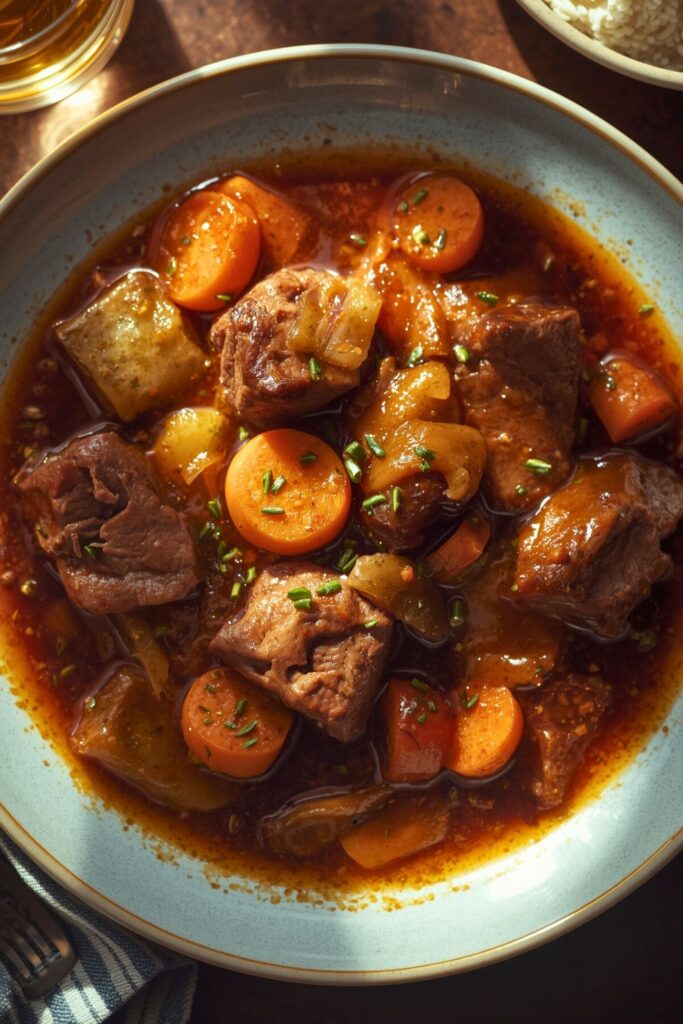
Why Beer Works Magic on Meat
Here’s the fascinating part about using beer in braises. The enzymes in beer, especially the alpha acids from hops, act as natural meat tenderizers. They break down those tough collagen fibers just like wine’s acids do, but with a completely different flavor profile.
The malt sugars in beer also contribute to browning reactions (the Maillard reaction, if you wanna get technical). This creates incredibly complex flavors that develop throughout the long cooking process. It’s basically chemistry working in your favor.
Temperature Science That Matters
That low, slow cooking at 325°F isn’t arbitrary. At this temperature, collagen slowly converts to gelatin without the meat fibers seizing up. Go too hot and you get tough, stringy meat. Too low and it takes forever without proper flavor development.
The magic happens between 160°F and 180°F internal temperature for the meat. This is where tough connective tissues melt into silky richness while the meat stays moist and tender.
Why the Dutch Oven Rules
Heavy, enameled cast iron distributes heat evenly and holds temperature steady throughout long cooking sessions. Those dramatic temperature swings you get with thin pots? They’ll absolutely ruin your carbonnade by scorching the sauce or toughening the beef. The steady, gentle heat is what transforms this from good to absolutely incredible, letting flavors meld deeply while keeping the meat perfectly tender.
Making It Beautiful & Delicious
Plating Like a Pro
Carbonnade isn’t the prettiest dish straight from the pot, but a few simple tricks make it restaurant worthy. Serve it in shallow bowls rather than deep ones, you want to see those gorgeous chunks of beef and caramelized onions.
A sprinkle of fresh chopped parsley brightens everything visually and adds a fresh note that cuts through the richness. If you’re feeling fancy, a small dollop of grainy mustard on the side elevates the whole experience.
Perfect Pairings
Traditional accompaniment is Belgian fries (obviously), but crispy roasted potatoes work beautifully too. The contrast between crispy exteriors and fluffy insides plays perfectly with the tender beef.
For wine lovers, go with something that won’t compete, a light Pinot Noir or even a Belgian style beer if you wanna stay themed. The malty sweetness complements the dish instead of fighting it.
A simple green salad with sharp vinaigrette cuts through all that richness perfectly. Nothing fancy, just good lettuce, a proper French vinaigrette, maybe some toasted walnuts.
Mastering Northern France Beef Carbonnade: Final Tips
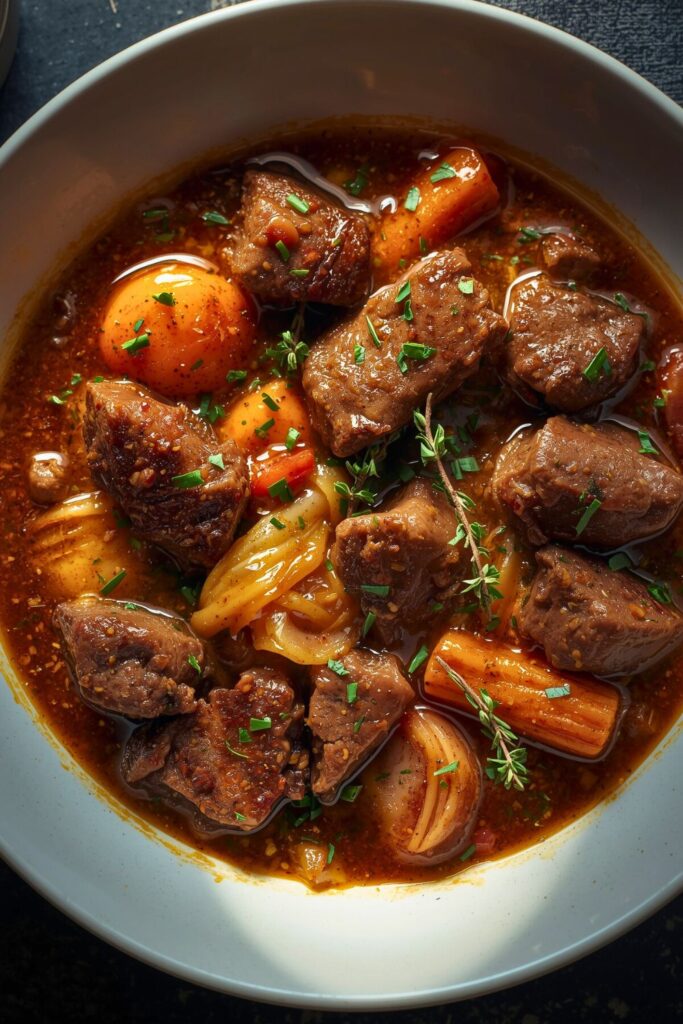
Northern France Beef Carbonnade represents everything I love about French country cooking. It’s unpretentious, deeply satisfying, and proves that the best flavors come from understanding your ingredients rather than showing off with them.
The key to perfect Northern France Beef Carbonnade is patience during every step. Patient browning, patient caramelizing, patient braising. Rush any part of the process and you’ll taste the difference. But take your time, and you’ll have something that tastes like it came from a bistro in Lille.
Make extra, seriously. This stuff is even better the next day, and having restaurant quality comfort food ready to reheat is like having a superpower during busy weeks. Plus, it freezes beautifully for up to three months.
Remember, cooking isn’t about perfection. It’s about creating something delicious that brings people together. Northern France Beef Carbonnade does exactly that, one tender, beer braised bite at a time.
Frequently Asked Questions
Can I make this without alcohol?
Absolutely! Replace the beer with beef broth plus a tablespoon of apple cider vinegar for acidity and balance. You’ll miss some of the deeper malty notes, but it’ll still taste rich and comforting. Some people even add a splash of root beer for sweetness, sounds unusual, but surprisingly it works and adds depth.
What’s the best cut of beef for carbonnade?
Chuck roast is the gold standard, it has great marbling, flavor, and becomes incredibly tender during slow cooking. Short ribs are even better if your budget allows, bringing luxurious richness, but they’re pricier overall. Avoid lean cuts like sirloin or round; they’ll turn dry and chewy no matter how carefully you cook them.
How do I know when it’s done cooking?
The beef should be fork tender, literally falling apart when you poke or shred it gently. If you can cut it cleanly with just a fork, then it’s perfectly ready to enjoy. The sauce should coat the back of a spoon, silky but not overly thick. Total cooking time ranges between 2–3 hours depending on your chosen cut.
Can I make this ahead of time?
This is actually one of those magical dishes that improves dramatically overnight. The flavors blend together beautifully, while the fat rises and solidifies on top for simple removal. You can make it up to 3 days in advance, or freeze safely for up to 3 months. Just reheat slowly on the stovetop or inside a low oven.
My sauce turned out too thin, can I fix it?
Sure thing! Remove the meat and vegetables, then simmer the sauce uncovered on the stovetop until it reduces. This concentrates flavor while naturally thickening. Alternatively, mix a tablespoon of flour with cold beer or broth, whisk smoothly, and simmer. In just 5 minutes, it thickens into a rich, velvety sauce with improved body.

Swiftly Captions by Tina Smith — Quick, flavorful food recipes made simple, bringing fresh inspiration to your kitchen every day




